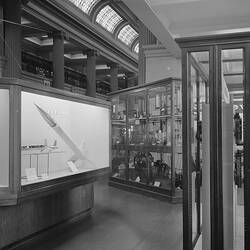Summary
History
The Skylark sounding rocket program began in the United Kingdom in 1954. The first launch took place at Woomera, South Australia in 1957. Skylark was developed by the Royal Aeronautical Establishment (RAE) and the Bristol Aeroplane Company (BAC) as a two-stage sub-orbital research rocket equipped with cameras, sensors or small payloads for scientific experiments. Despite losing British government funding in 1977, the Skylark program continued until 2005 when the final launch took place in Sweden. By this time the program was being managed by a private UK firm, Sounding Rocket Services. The final version of Skylark could take five experimental payloads in four compartments which were returned to earth using a parachute.
Skylarks were also assembled in Australia by the Weapons Research Establishment at Salisbury, South Australia. About 200 Skylarks were launched at Woomera between 1957 and 1979. On later versions power was supplied by UK-built 'Goldfinch' booster rocket for the first stage and a 'Raven' second-stage rocket. Among the experiments conducted with Skylark were X-ray and UV astronomy programs which discovered new X-ray sources from space.
Model History
This 1:4 scale model was donated to the Museum in 1959 by the Weapons Research Establishment in South Australia.
More Information
-
Collecting Areas
-
Acquisition Information
Donation from Australia: Defence Department, Weapons Research Establishment (WRE), 02 Jun 1959
-
Designer of Item Modelled
Royal Aeronautical Establishment (RAE), England, Great Britain, circa 1955
-
Manufacturer of Item Depicted
Bristol Aeroplane Company (BAC), England, Great Britain, circa 1955
-
User of Item Depicted
Australia: Defence Department, Weapons Research Establishment (WRE), South Australia, Australia, 1959
-
Classification
-
Category
-
Discipline
-
Type of item
-
Model Scale
1:4
-
Keywords




